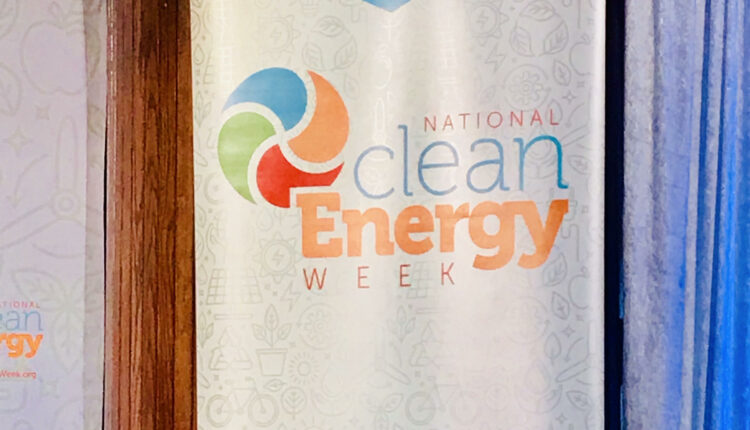
Clean Energy Policies Discussed in D.C. During National Clean Energy Week
By Prianka Sharma, Assistant Chief Counsel
Towards the end of September policy makers in the energy industry from around the country gather in Washington, D.C. for a National Clean Energy Week policy symposium. The conference is an opportunity for those in industry to interact with legislators and government officials to discuss policies affecting the industry. Assistant Chief Counsel Prianka Sharma, whose portfolio includes energy and natural resources, attends this symposium annually to offer a small business perspective to these discussions.
At this year’s symposium, panelists spoke about a variety of issues from states diversifying energy portfolios, to ways to have clean coal and nuclear in states that are dependent on these types of energy sources, to how agencies can regulate better to meet industry needs. One panelist spoke about how many rural communities are turning to wind energy as an alternative energy source to traditional sources. In many towns wind energy is known as a “drought resistant” cash crop for rural farmers who have suffered losses due to harsh weather and natural disasters destroying their crops. Panelists stated that many are turning at least some of their land into wind farms, but there are transmission constraints and no good means for storage of this energy which are limiting factors for this emerging trend.
Another panelist spoke about how 97 percent of U.S. dams do not currently generate power. He stated that this was a major untapped energy resource and job creator in the industry. Many rural and remote communities are turning to energy sources such as hydroelectric power because there are few other feasible options. They are also looking at hydro-kinetic options in areas with strong river currents.
Many panelists spoke about the need for regulatory certainty and issues with the current agency permitting processes. They stated that the processes are dysfunctional, time-consuming, and in some cases a barrier to entry for new and emerging businesses. They also identified that there is currently no mechanism to resolve disputes with agencies on permitting issues and consultations.
Assistant Chief Counsel Sharma also heard from agency officials at the Department of Energy (DOE) and the Federal Energy Regulatory Commission (FERC). DOE officials stated that they are interested in making their resources more accessible to small startups and other companies and cited their program that allows startups to use DOE lab facilities to test their products. FERC officials spoke about a new proposed rule that provides updates to the Public Utility Regulatory Policy Act (PURPA). The rule proposes to modernize regulations to fit with a modern energy landscape. Advocacy is eager to engage with stakeholders about this proposed rule to assess the potential impacts to small business.
The final topic that came up at the symposium was that there needs to be more incentive for industry to explore renewable options. Some businesses spoke about the current solar tax credits. The solar tax credit known as the investment tax credit (ITC) allows a deduction of 30 percent of the cost of installing a solar energy system from federal taxes. It applies to both residential and commercial systems and there is no cap on its value. Panelists spoke about adding further tax incentives for other renewables in order to get consumers and industry on board. As one panelist stated “Consumers and businesses will embrace renewables if you make it easy and accessible.”
Prianka Sharma is an Assistant Chief Counsel for Advocacy whose portfolio includes agriculture, energy, and natural resources. Sharma can be reached at Prianka.sharma@sba.gov.
